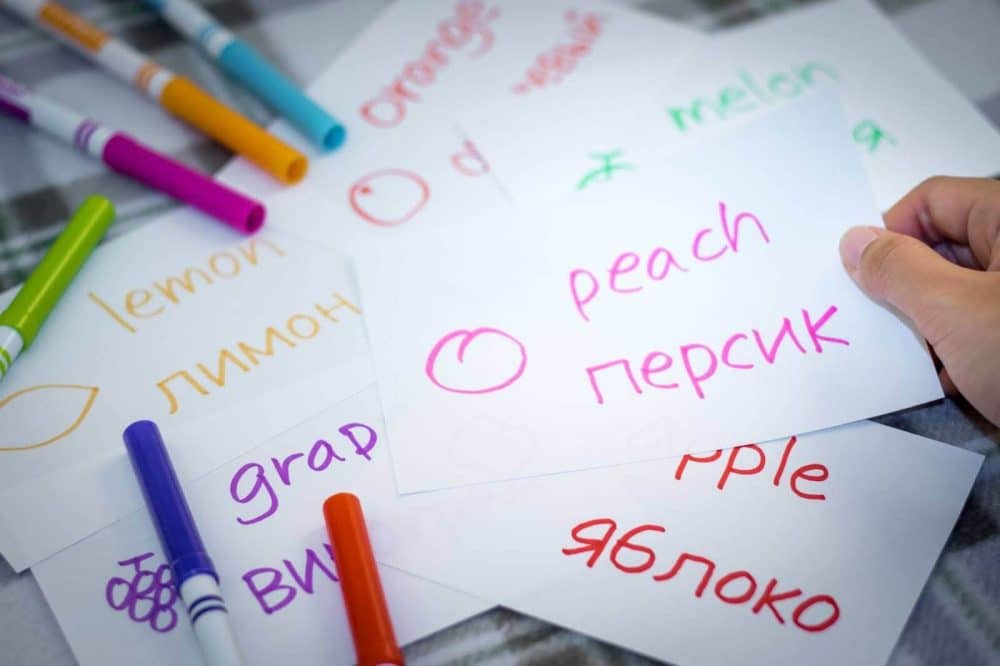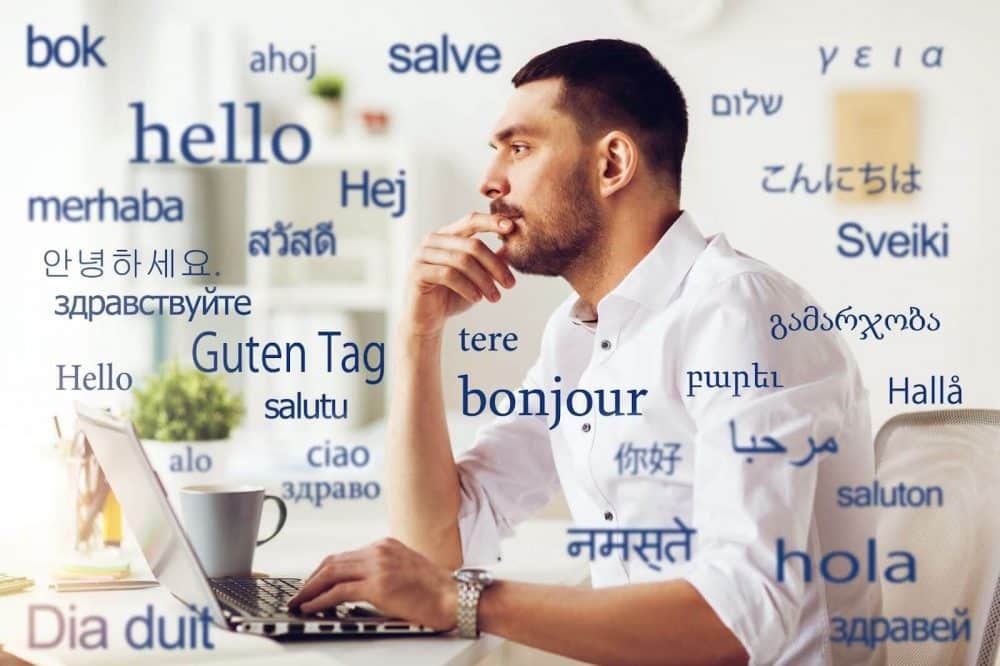Learning languages can help you improve your professional qualifications or become a fun hobby. However, certain languages are more difficult to learn than others due to various factors, including their complex grammar, hard pronunciation, or a different, more complicated writing system.
What is the hardest language to learn? Have you ever tried familiarizing yourself with one of the most difficult languages? Let’s take a look at some of them and explore their challenges!

Factors That Make a Language Difficult to Learn
Every language may have its own difficulties, but there are certain factors that tend to make some of them a really tough nut to crack. Here are some of the reasons why certain languages are so hard to learn:
- 📚 Grammar Complexity: One of the biggest challenges is typically grammar. Some languages have complex rules, countless exceptions, and irregular verbs that make building sentences tricky. Languages like German and Russian, for example, have cases — grammatical categories that change the form of a word depending on its role in the sentence.
- ✍️ Unique Script and Alphabet: In many languages, the first thing you need to learn is the writing system, as it is different from Latin letters. Moreover, languages like Arabic, Mandarin, and Japanese not only require learning new characters but also understanding the rules of how these characters interact.
- 🗣️ Pronunciation Challenges: Some languages are difficult to pronounce because they contain sounds or tones that don’t exist in English. Mandarin Chinese, for example, is a tonal language, which means that the pitch used to pronounce a word can completely change its meaning. Some of the hardest languages to learn, like Russian, include difficult sounds such as rolled or guttural consonants, which require a lot of practice to be pronounced accurately.
- 🌍 Cultural and Linguistic Distance: The further a language is from a learner’s native language, the more challenging it can be to learn. For instance, an English speaker might find Spanish or French relatively accessible because these languages share many similarities with their mother tongue in terms of vocabulary and structure. However, Japanese, Chinese, and Arabic present a different story, not only due to their writing systems and grammar rules but also cultural references, idiomatic expressions, and communication styles.
What Are the Hardest Languages to Learn?
Such institutions like the Foreign Service Institute analyze the complexity and difficulty levels of certain languages, and according to their research, these are some of the hardest languages to learn:
Mandarin Chinese
Mandarin Chinese is often considered the hardest language to learn due to its tonal nature and logographic writing system. Interestingly, if we count native speakers only, it is also the most spoken language in the world.
To master it, you need to memorize thousands of characters, each representing a word or concept rather than a sound.
What’s more, you need to be extra careful about tones, as the pitch of a syllable strongly affects the meaning of a word. Wrong pronunciation can lead to terrible misunderstandings!

Arabic
Arabic is known for its flowing script, which connects letters in a cursive style, and its numerous dialects, which are very different across regions.
This diversity means that learners might have to choose between Modern Standard Arabic (for formal use) and regional dialects.
Moreover, Arabic grammar is also hard to learn, as it includes complex verb conjugations and noun cases, which can be problematic for even the most dedicated learners.

Japanese
One of the main difficulties in Japanese is that it has three writing systems: Hiragana, Katakana, and Kanji. Mastering Kanji, which is borrowed from Chinese and includes thousands of characters, is a major challenge for learners.
Additionally, Japanese honorifics add complexity as language use changes based on social hierarchy and the relationship between the speaker and listener.

Korean
The Korean language also poses significant challenges, as it uses the Hangul script (a characteristic alphabet) and a complex honorific system.
Moreover, it has an agglutinative structure, which means words are formed by adding various prefixes and suffixes, so you need to get used to such a challenging sentence construction method.
On top of that, this language has many cultural nuances, which make it even more difficult to learn.

Russian
Russian’s Cyrillic alphabet can initially be challenging for learners unfamiliar with non-Latin scripts.
Beyond that, Russian has a case system that affects noun endings depending on their role in the sentence, making this language even more difficult to acquire.
Furthermore, it may also take a while to learn proper Russian pronunciation, especially its hard-to-master consonant clusters.

Icelandic
Icelandic is typically classified as the hardest language to learn in the Germanic branch. It inherited much of its historical grammar and vocabulary from Old Norse, which makes it quite archaic compared to other languages.
One of the main difficulties in Icelandic is its complex grammar and heavily inflected sentence structure.
What’s more, Icelandic is known for amazingly long words that often combine multiple elements to create new words, which can pose quite a challenge.

Finnish
Finnish is part of the Uralic language family, distinct from the Indo-European languages most Western learners are familiar with.
Finnish is known for its extensive case system and agglutinative grammar, where words are formed by adding numerous suffixes to a root. As a result, mastering Finnish requires a lot of memorization and practice.

Hungarian
Hungarian is another member of the Uralic family, often mentioned as one of the hardest languages to learn. Its interesting yet challenging feature is that certain vowels in a word must align harmonically.
Moreover, Hungarian is highly inflected, with many suffixes attached to words to indicate tense, possession, and other grammatical features, so it takes quite some time to master.

The Hardest Languages to Learn – Summary Table
What Is the Hardest Language to Learn in the World? Expert Opinions on the Top Contender
According to the Foreign Service Institute (FSI), which trains U.S. diplomats in foreign languages, Mandarin Chinese requires about 2,200 hours of study to achieve proficiency, classifying it as a “super-hard” language.
Many linguists and language enthusiasts agree, stating that its steep learning curve demands a commitment similar to that of learning multiple European languages.
Additionally, the Defense Language Institute Foreign Language Center, which trains employees and law enforcement officials, classifies Mandarin as Category IV, which is the highest difficulty level for English speakers. The course length for languages in this category is as many as 64 weeks.

Can Anyone Learn These Languages?
With the right strategies, motivation, and a solid time commitment, you can master even the most difficult language.
Learning languages like Mandarin Chinese, Arabic, Japanese, or Hungarian may seem very challenging, but many learners have succeeded, proving that dedication can overcome even the most significant difficulties.
Tips for Learners of the Hardest Languages in the World
What Is the Hardest Language to Learn? – The Final Note
All in all, the difficulty of learning a language often depends on a range of factors, including complex grammar rules, unique scripts, challenging pronunciation, and cultural distance from a learner’s native language.
Mandarin Chinese is typically considered the hardest language to learn, but there are also many other very challenging languages, such as Arabic, Japanese, Korean, Icelandic or Hungarian. Mastering them requires a lot of patience, time, and effort, but it can be very rewarding.
If you need help with a foreign language you don’t know, you can always benefit from professional translation services. At Lighthouse Translations, we offer conference interpreting, document translations, immigration services, and more, covering many different languages (including some of the hardest ones, like Mandarin Chinese, Korean, or Japanese).
Contact us for more information and get a free quote!
